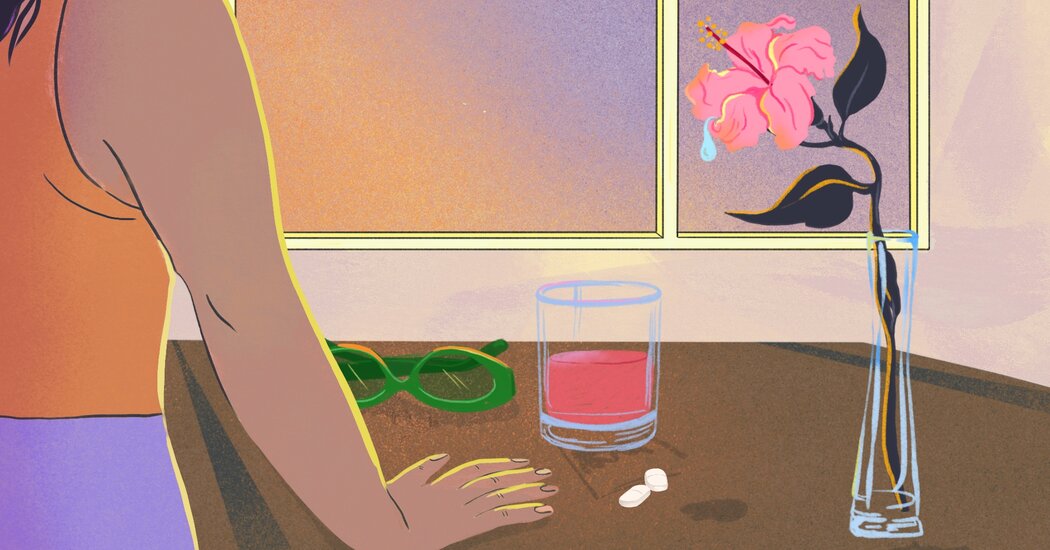Infection
The Persistent Confusion Around the U.T.I.
Much of the advice about urinary tract infections isn’t rooted in science. Here are four misunderstood facts about this very common affliction.
Over half of women in the United States will get a urinary tract infection in their lifetime. (This is compared to an estimated 14 percent of men.) Despite being common, it is often an experience layered with frustration and stigma, said Dr. Kalpana Gupta, a professor at Boston University Chobanian & Avedisian School of Medicine who does research on U.T.I.s. Patients “feel some personal responsibility,” she said. “Like, ‘I’m doing something wrong.’”
In most cases U.T.I.s — known as bacterial cystitis — are only loosely correlated with personal behavior, she said. The main reason U.T.I.s are more common in women is that they have shorter urethras than men, which makes it easy for bacteria to reach the urinary tract; a U.T.I. in a man is often part of a larger health issue, Dr. Gupta said.
A vast majority of U.T.I. cases are caused by E. coli bacteria, which lives in the gut and sometimes hangs out on the perineum. How and in what circumstances the bacteria migrates into the urethra and infects the urinary tract is “not 100 percent worked out,” she said.
A lot of the misconceptions around U.T.I.s crop up because there is very little quality research into the issue, said Dr. Ja-Hong Kim, a urologist at UCLA Health. Here are some of the most common questions experts get from patients.
Is it a U.T.I. if there’s no burning sensation?
It can be. A U.T.I. can occur anywhere along the urinary tract, which includes the urethra, bladder, the kidneys and, in men, the prostate, Dr. Kim said. For an issue to be considered a U.T.I., a patient must show some symptoms and have confirmed bacteria in their urine.
A lot of the widely known symptoms, like burning and the constant sensation of needing to go to the bathroom, “come from studies that are done in young, college-aged, otherwise healthy adult women,” Dr. Gupta said. But, in fact, symptoms can vary.
In older adults, U.T.I.s might present as a fever or a feeling of fullness, she said. Some patients have lower backaches, signaling that the U.T.I. might be in the kidneys, which would make it a more acute case that can lead to sepsis and kidney damage, though those outcomes are “very, very rare,” Dr. Kim said.
Is it because I had sex?
Not necessarily. Women are often advised to urinate before and after sex to flush out any bacteria, but that practice isn’t backed by any evidence, said Dr. Benjamin Brucker, director of urogynecology at NYU Langone. “I don’t have a study to quote you that says peeing after sex or before sex reduces infections,” he said.
Anecdotally, though, that might work for some women, he added.
The most common hypothesis about a connection between sex and U.T.I.s is that the bacteria on the skin of the perineum is pushed into the urethra during penetrative sex, which can develop into a U.T.I., Dr. Gupta said. Another is that because products, like spermicides, change the microbiome of the vagina, they can create an environment in which bacteria can blossom and migrate to the urethra. But some women never develop U.T.I.s with increased sexual activity, even if they don’t urinate before or after.
Is this a hygiene problem?
Doctors often tell women that hygiene — like wiping front to back, not wearing a wet swimsuit for long periods and avoiding tightfitting underwear — can reduce the risk of developing a U.T.I. The thinking is that wiping front to back reduces the chance that bacteria from fecal matter will be pushed into the urethra and that a wet swimsuit or tight underwear might irritate the vaginal area.
Those practices don’t hurt, but they’re not rooted in scientific evidence either, Dr. Gupta said, adding that dispensing that kind of advice in the context of a U.T.I. can end up giving women anxiety about their cleanliness.
“The bottom line is that the risk for U.T.I. is not related to how well you bathe” or to a wet swimsuit or to your choice of clothing, she said.
Are antibiotics my only option?
Not always. “Imagine you got scratched by a tree when you were out hiking, and it got a little red. You don’t necessarily go and get antibiotics because your body can fight off that bacteria,” Dr. Brucker said. “U.T.I.s are bacteria like anything else,” and many young, healthy patients find that the body can eventually flush the bacteria out on its own. While antibiotics are part of the standard care protocol, he said, it is worth first getting a culture done, which takes time, to figure out the best medical intervention.
In mild cases, good hydration can help the body get rid of the infection, Dr. Brucker said. There are over-the-counter pain relievers, like Tylenol, Ibuprofen and Azo, that can help reduce discomfort while the body does its job.
Research published in April found that the age-old idea that cranberries can prevent U.T.I.s might have some truth to it. In a meta-analysis of 50 randomized control trials, cranberry products — juice, tablets or capsules — reduced the risk of U.T.I.s for women with recurrent infections, children with U.T.I.s and people susceptible to them, but not for other groups, like older men and women or pregnant women.
For menopausal women, decreasing levels of hormones can alter the vaginal environment and increase the risk of U.T.I.s. In those scenarios, Dr. Brucker said, vaginal estrogen can be “an excellent way” of preventing infection.

